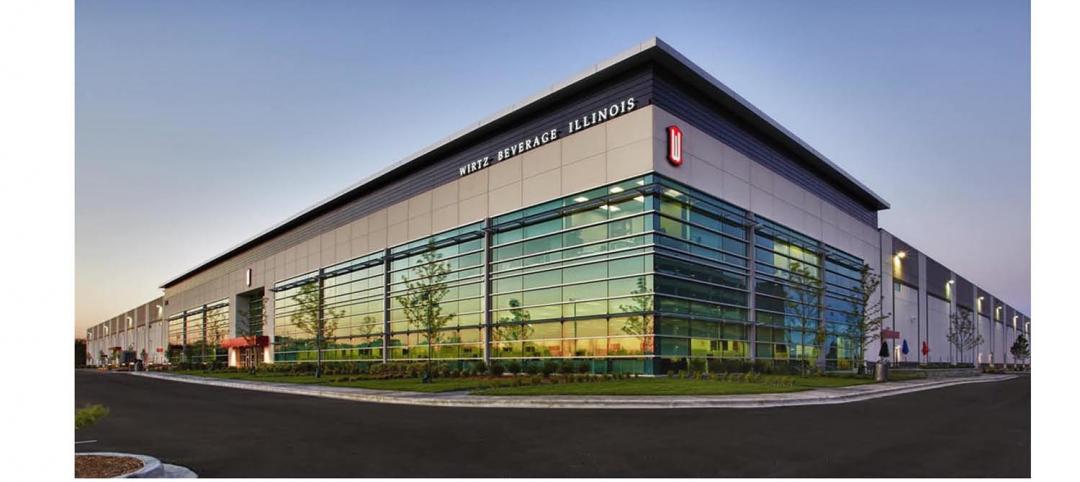Data centers are among the most complex building types, requiring a significant amount of coordination among Building Team members, often with a compressed schedule and in tight spaces. Perhaps no other project type stands to benefit more from coordination using building information modeling and virtual design and construction than data centers.
“Everyone speaks to the benefits of BIM for coordination and clash detection on projects, but when you talk about all of the lines of conduit and other elements that you’re running through what are ultimately very tight spaces, it’s a steroidal environment when you’re talking about a data center,” says Bryant Farland, Senior Vice President and Leader of Skanska’s Mission Critical Center of Excellence. “Coordination becomes just that much more important, therefore, BIM becomes that much more useful.”
Building Design+Construction reached out to several AEC professionals who specialize in data centers to identify the areas of planning, design, and construction where they’re getting the most value out of BIM/VDC coordination. They pinpointed the following:
1. Planning the space
Data centers have huge mechanical and electrical capacities for their footprint—as many as 30 times the typical office building. Furthermore, the equipment is typically concentrated outside the server halls to reduce risk to the IT equipment. Together, these factors create incredibly dense equipment spaces and major duct, pipe, and conduit distribution paths, says Tom Boysen, Senior Project Manager with Sellen Construction (www.sellen.com).
“BIM helps data center designers confirm that the equipment and distribution can all fit, verify maintenance and service clearances, and analyze pressure drop and voltage drop with the actual routing,” says Boysen, who leads Sellen’s data center work. “Underground electrical feeders can be so dense that they could overheat and melt down if not designed properly. BIM’s precise routing allows electrical designers to model the heat dissipation and adjust the electrical duct bank configuration accordingly.”
2. Coordinating prefabrication
Data center clients, whether wholesale operators, tech firms, or financial institutions, are pushing the pace of new construction and retrofit projects. Fast track is passé. Uber fast track is the new standard as clients look to get their facilities online sooner.
To help speed construction, AEC firms are prefabricating many of the building systems and components, from the enclosure to the mechanical and electrical systems. BIM/VDC is vital for designing and testing prefabrication concepts with respect to material handling, path of travel, and installation sequence.
“We’re constantly pushing the amount and types of items we fabricate at our facilities,” says Jason Rahn, Group Vice President with The Hill Group (www.hillgrp.com). “This allows us to minimize the amount of fit-up and welding in a field environment, and it allows us to maintain excellent quality assurance due to the majority of our work being built in a controlled, shop atmosphere.”
Rahn points to a recently completed data center that required 450 welds for the piping systems, of which only 20 needed to be performed in the field. “The reduction in field welding required us to have only one welding machine on site,” he says. “It also decreased the field installation time from about 20 working days to just five.”
One prefabrication tip from Rahn: Make sure to include hangers in the BIM model. “It allows us to fabricate all piping supports and hangers en masse, deliver to the site early, and have installation completed prior to piping and ductwork material deliveries.”
3. Managing project phasing
Data center projects are typically phased to avoid building out expensive capacity that is not needed on day one. Often, the initial capacity target shifts during design and construction due to leasing activity and the difficulty of projecting the need for computer power, says Boysen.
“By adding a phasing element to the BIM model, the team can analyze the cost, schedule, and energy consumption at different phase steps,” says Boysen. “BIM supports phasing by quickly allowing the team to modify the design documents, adding or subtracting modules of power and cooling. Then, after the day-one construction is complete, BIM supports future development with an accurate record of the installed condition, allowing the team to plan future deployments with confidence.”
4. Integrating raised-floor layouts
Raised access floors can be especially tricky, says Rahn, because most floor installers do not model their installations—adjustments for structural bridging and support are typically made in the field. Creating a BIM model of the flooring allows the installer to understand where the MEP systems are located in relationship to the pedestal support systems.
“By coordinating and integrating this into the modeling process, flooring installers can see where they need to modify their support framing early in the process and fabricate the necessary bridging and support components to span across the MEP systems where necessary,” says Rahn. “This eliminates the time and effort it would take to do this in the field once the MEP systems are installed, thus decreasing the field installation time.”
5. Keeping the routing free of conflicts
Transmitting the capacity out of the densely packed equipment requires multiple layers of stacked conduit, duct, and piping. Using the model, the detailers can pick up where the designers left off, adding intelligence to the individual elements. “Tight project schedules don’t allow for field routing to solve conflicts, so the routing must be solved during the detailing stage to allow for 99.99% conflict-free installation,” says Boysen.
6. Enabling commissioning and O&M tasks
Data centers require a robust commissioning process to ensure performance and reliability. Commissioning information tags for each piece of equipment and feeder can be added to the BIM model to keep a live database of commissioning process status.
“As with any new facility construction, the information that is so valuable to the operational staff—namely submittals, O&M manuals, as-built plans, balancing reports, and commissioning reports—is sometimes never transmitted to them, and then often lost over the years as the personnel turn over,” says Boysen.
When this information is inserted into the BIM database, the information can be retained and viewed for each piece of equipment, rather than in separate volumes. “Whether they are facing a problem or trying to improve energy efficiency, data center operators would benefit from a comprehensive set of information,” he says.
7. Analyzing air flow
By incorporating computational fluid dynamic (CFD) simulations into the BIM model, engineers can evaluate and fine tune server layouts based on the thermal modeling. “By incorporating that process into the Revit model, we’re able to visualize how the air will flow inside the data center and see the temperature variation based on the height and how the air is moving,” says Luis Cetrangolo, AIA, Associate at Integrated Design Group (www.idgroupae.com). “It’s especially helpful in being able to see how the servers in a computer room receive cold air and how hot air is removed.”
Cetrangolo says the CFD modeling is used more as a verification of engineering calculations than as a design tool. “It’s really a fine-tuning process.”
We want your ideas! This topic will be an ongoing series on BDCnetwork.com. If you have ideas for how BIM/VDC coordination benefits data center projects, please send them to dbarista@sgcmail.com.
Related Stories
| Dec 7, 2012
Structural glazing sealant protects solar-rooftop stadium in Taiwan
Designers of the Kaohsiung World Games Main Stadium in Gaoxiong, Taiwan, powered by almost 9,000 rooftop solar panels, required an effective panel fixing design offering optimum energy transfer rate, plus thermal and weathertight performance. Dow Corning specialists recommended a four-sided structural sealant solution featuring Dow Corning 983 Structural Glazing Sealant.
| Dec 6, 2012
Ziegler Cooper names Soto as Director of Design, Broadens Design Capabilities
Soto will oversee design efforts, bringing a high level of quality and problem solving capabilities through active engagement with clients and studios firm wide.
| Dec 5, 2012
Gilbane publishes Winter 2012 construction economic report
Report outlines impact of recent events; predicts continued movement, while slow, toward recovery.
| Dec 5, 2012
Gehry-designed New York City tower receives Emporis Skyscraper Award
8 Spruce Street is now the third New York tower to win the Emporis Skyscraper Award.
| Dec 4, 2012
MKK’s Denver Human Services Eastside Building wins ACEC Excellence Award
MKK provided mechanical, plumbing and fire protection consulting services on this LEED-NC Gold project.
| Dec 4, 2012
Thornton Tomasetti opens new office in São Paulo, Brazil
The move to São Paulo is strategic and timely, as the country continues preparations for the 2014 World Cup and 2016 Olympic Games in Rio de Janeiro.
| Dec 4, 2012
Greenhorne & O’Mara signs letter of intent to join Stantec
Acquisitions of C3TS and Architecture 2000 also completed.
| Dec 4, 2012
Sto Corp. announces new distributor in the Carolinas
Company will now have coverage in several parts of North Carolina.
| Dec 4, 2012
Wirtz Beverage Illinois’ corporate headquarters completed
WBI Center, a new state-of-the-art facility, is designed by Ware Malcomb.
| Dec 4, 2012
Wagner joins Ghafari as Manager of Structural Engineering
Wagner comes to Ghafari from Walter P Moore, where he served as a principal, chaired the construction administration task force and led the design of numerous projects ranging in size from $10 million to $70 million.













